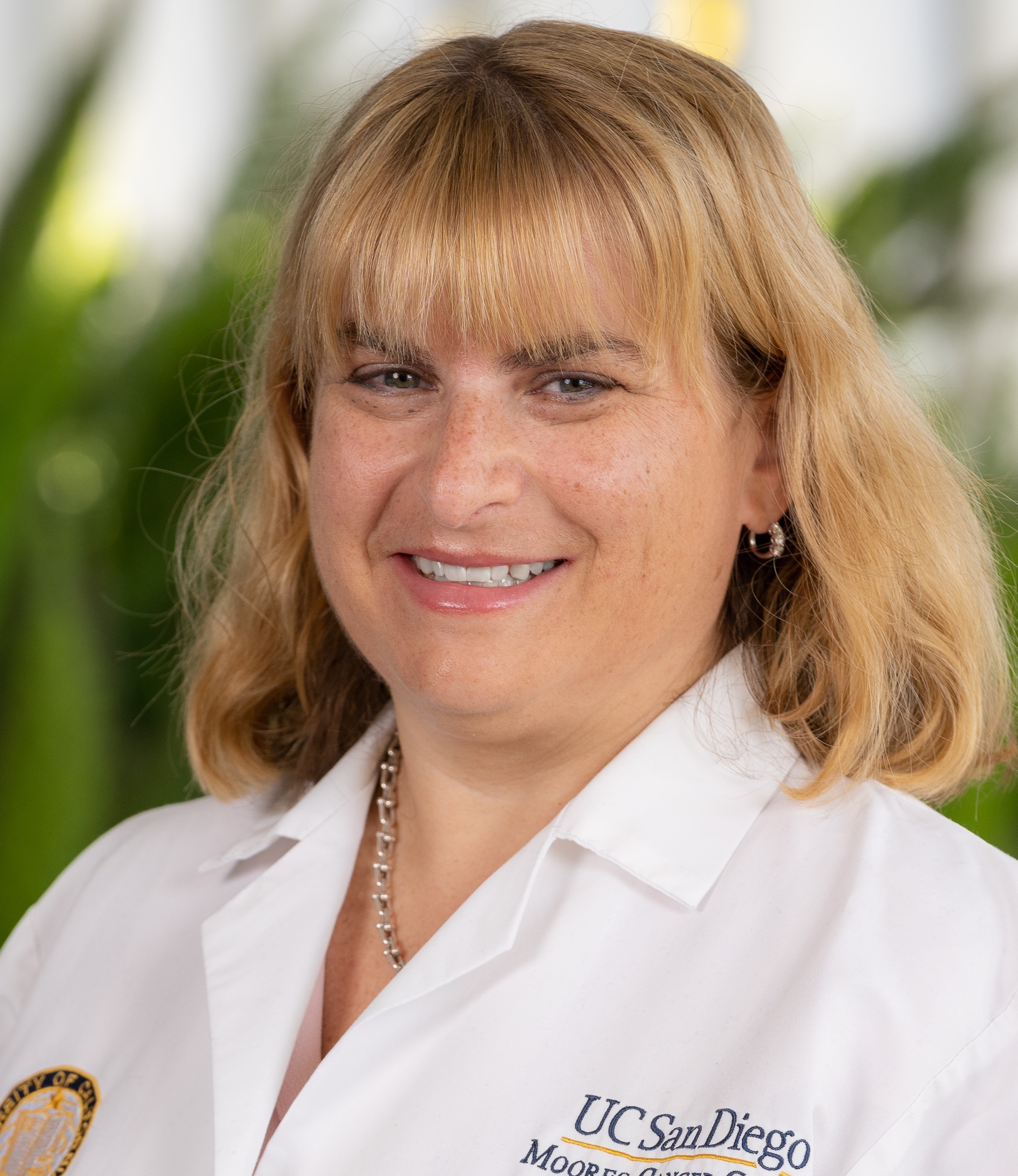Q & A with Sarah Blair, M.D.

Sarah L. Blair, M.D., is a breast surgical oncologist and board-certified general surgeon who specializes in diagnosing and treating breast cancer and soft tissue tumors. She is also the inventor of a new tumor localization system that helps surgeons rapidly detect and visualize breast tumors for precise cancer removal.
October 31, 2024 | Interview by Brittany Fair, M.S.
Where are you originally from?
I’m from Buffalo, New York, which is very different than California. Buffalo has this industrial feel and is a very sports-centered town. And it’s so cold there! I remember my mom bundling me up in clothes, only to go outside for five minutes.
Did you always know you wanted to go into medicine?
My mother’s brother died of scarlet fever as a child. Due to this traumatic experience, she made us go to the doctor anytime we had any symptoms. So, I thought a lot about medicine at a young age and wanted to learn more about the science behind the medications and illnesses I was experiencing.
What is a breast surgical oncologist, and when did you decide it was the path for you?
Breast surgical oncology focuses on treating conditions that affect breast health, including cancers. But the role also includes treating unusual conditions, such as granulomatous mastitis, which is a rare, benign breast disease that can cause symptoms similar to breast cancer.
My mother influenced my career a lot. She was diagnosed with breast cancer when I was a chief resident in surgery at the University of Massachusetts Medical School in Worcester. She had such a hard time deciding on her treatment plan because the options weren’t straightforward. I wanted to learn more so I could help her. After a lot of research, I advised her to not get a mastectomy, and she remains healthy to this day.
What brought you to UC San Diego Health?
I completed my surgical oncology fellowship at the City of Hope in Los Angeles, California. When this position opened at UC San Diego, I was elated to move to San Diego to continue my research and clinical practice. In 2007, I received a grant to look at surgical margins in breast cancer and decided to fully focus on breast health moving forward.
Breast cancer treatment remains very complicated. Deaths due to breast cancer are decreasing but the incidences of breast cancer are going up. This trend is likely due to environmental factors, such as poor diets and a lack of exercise.
You recently developed a tumor localization system for better detecting cancer. Can you tell me more about this technology?
Absolutely! My husband and I have a start-up company called Viewpoint Medical based on licensed technology from UC San Diego. The device is called the OneMark Detection Imaging System, and it enables surgeons to rapidly detect and visualize marked tissue for a more precise cancer removal.
What were you observing in your clinical practice where you thought there was a need for this device?
When I started doing this research, we were using physical wire to help us identify the breast tumor during the removal process. The problem with this technique is that it requires patients to have an additional procedure prior to surgery to place the wire.
Interestingly, I was participating in a grant that was focused on using nanoparticles to deliver chemotherapy to patients. However, the project wasn’t working because the nanoparticles were not getting into the cells. The nanoparticles were bright and could be detected using an ultrasound, so I thought maybe there is a better use for these nanoparticles to target tumors for surgical resection.
It turns out that the nanoparticles stay where you inject them and by imbedding them in a long-acting gelatin, they can remain in one place for up to nine months. This is helpful because we can use the nanoparticles to mark a tumor for later removal after chemotherapy is complete. And we can insert the nanoparticles during the time of biopsy, which eliminates that second procedure before surgery.
This technology sounds very exciting! Have you started using it in patients yet?
We recently received FDA approval for the system, and we have completed testing it in animal models. We’re aiming to start clinical trials in humans in December 2025. Our goal is to implement this technology in the clinical setting as soon as possible.
I also must share that the Department of Surgery has been very supportive of the whole process. They’ve made it easy for me to pursue this research and find success.
Are there any fun facts you’d like to share before we wrap up the interview?
Outside of work, I enjoy reading novels, primarily fiction, in my backyard and listening to the birds. We have a lot of hummingbirds, and it’s such a nice place to relax and take a break.
